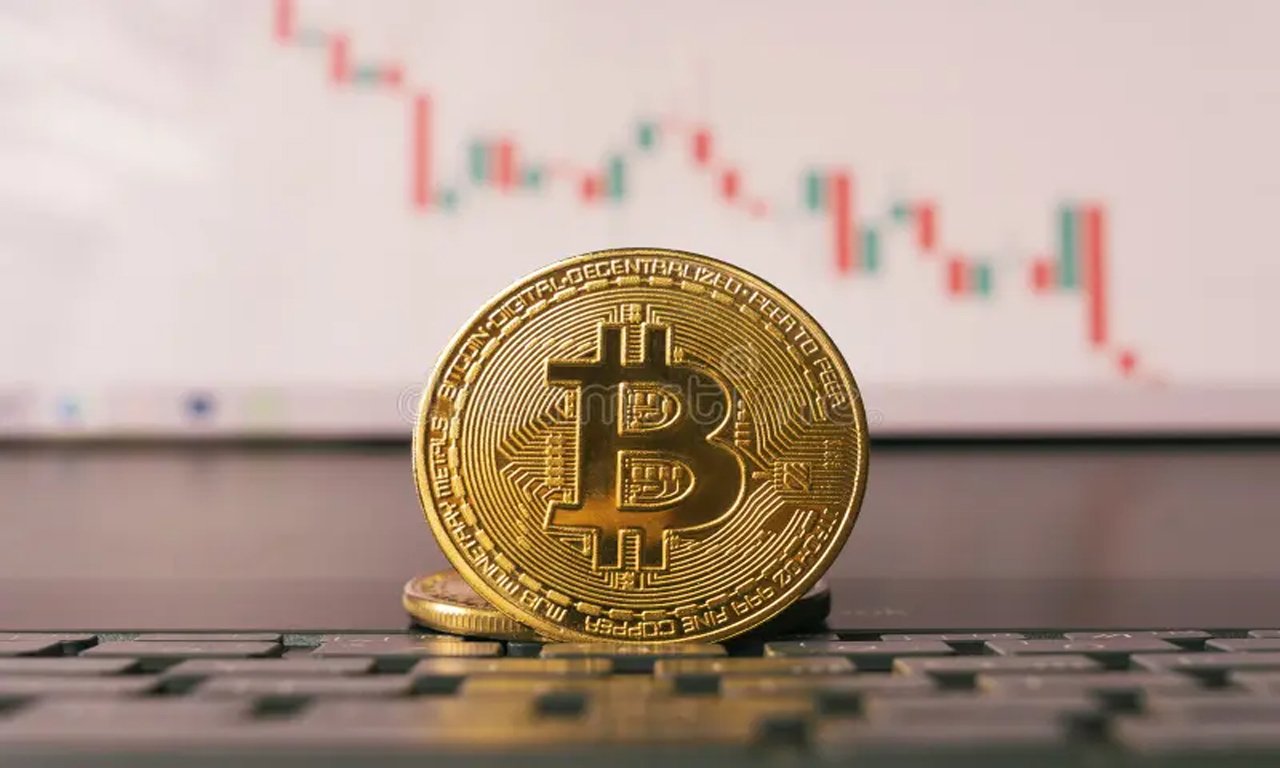The volatility of cryptocurrencies is well-known; hence, today, June 2, 2025, is no different. Unquestionably leading the Crypto Market, Bitcoin has witnessed a significant decline below the $105,000 level, attracting interest from traders, investors, and experts alike. Flare (FLR), meanwhile, has been the top gainer, gathering notable momentum in what has been a stormy market today. With an emphasis on Bitcoin’s price movement, Flare’s ascent, and the prevailing market sentiment, this paper will closely examine the current developments in cryptocurrencies.
Bitcoin Price Drop Market Uncertainty
A significant event for the worldwide bitcoin market: Bitcoin’s price as of June 2 has dropped below the crucial $105,000 level. Ripples have spread across the larger crypto ecosystem following this fall, as traders speculate on possible reasons and future consequences. The decline in Bitcoin has not gone unnoticed, particularly in light of the earlier period this year of tremendous optimism.
Bitcoin’s price has been rising in recent months, primarily driven by institutional investments, growing acceptance in financial markets, and increasing global interest in blockchain technology. However, today’s decline below $105,000 has triggered both temporary profit-taking and raised questions about the viability of Bitcoin’s recent price increases.
 Broad macroeconomic conditions, legislative changes, and market attitudes could be among several elements influencing this price shift. The continuous interest rate changes of the U.S. Federal Reserve, together with inflationary pressures, are impacting the financial markets, which in turn affect the price of Bitcoin.
Broad macroeconomic conditions, legislative changes, and market attitudes could be among several elements influencing this price shift. The continuous interest rate changes of the U.S. Federal Reserve, together with inflationary pressures, are impacting the financial markets, which in turn affect the price of Bitcoin.
Furthermore, adding uncertainty to the market is the continuous examination of Bitcoin rules in major countries, such as the United States and the European Union. Investors still find regulatory clarity—especially with relation to the classification of digital assets and taxes—to be a source of anxiety. Particularly for highly sought-after goods like Bitcoin, this uncertainty can sometimes lead to price volatility.
The fall in Bitcoin below $105,000 has also spurred discussion on its long-term viability. Many analysts still believe that, despite temporary swings, Bitcoin’s fundamental ideas—decentralization, scarcity, and security—will always be the key players in the cryptocurrency scene. However, the road to general acceptance may require a sequence of pricing adjustments similar to the one we are currently seeing.
Flare’s Surge in Blockchain Interoperability
Although the price decline of Bitcoin has attracted most of the market’s interest, one asset has stood out for its outstanding performance: Flare (FLR). With its price seeing a notable rise in a brief period, Flare has exploded today to become the top gainer in the cryptocurrency market.
Thanks to its creative approach, Flare—often characterized as an intelligent contract platform designed to improve interoperability between various blockchains—has become rather popular. The platform is designed to add innovative contract features to networks like Bitcoin and Litecoin, which typically do not support them. Flare is thus a helpful participant in the expanding cross-chain solution ecosystem.
The native token of the Flare network, FLR, has benefited most from this increased awareness. There can be several reasons behind this increase in the price of FLR. The growing need for interoperable solutions within the blockchain sector is one of the primary changes. Platforms like Flare, which provide exceptional cross-chain capabilities, are growing increasingly appealing as more investors and developers seek means to bridge the gap between various blockchain ecosystems.
Furthermore, helping the token’s ascent are Flare’s announcements of partnerships, platform enhancements, and increasing acceptance by distributed finance (DeFi) applications. The favourable attitude toward Flare reflects larger trends in the DeFi industry, which continues to expand despite the instability of Bitcoin.
Bitcoin Market Trends and Volatility
The larger Bitcoin market has been experiencing expansion in 2025, alongside bouts of uncertainty. The current decline of Bitcoin below $105,000 may represent a brief correction or the start of a more significant downward trend. Particularly in an asset class as erratic as cryptocurrency, market mood is crucial for determining price swings.
The prices of both Bitcoin and altcoins are significantly influenced by investor behavior, social media sentiment, and news cycles. Common in the cryptocurrency scene is the emergence of speculative trading, where short-term gains and losses significantly influence market sentiment. Key drivers of market movements, including retail traders who typically influence price direction through collective action, are social media channels such as Twitter, Reddit, and Telegram.
Still, the market is shaped not just by individual retail investors. Driving market developments is also largely dependent on institutional investors, who have become progressively engaged in cryptocurrencies over the past several years. Institutional buying and selling exacerbate the price volatility of Bitcoin as these large players transfer significant volumes of money.
Global Cryptocurrency Regulation and Impact
The regulatory landscape for cryptocurrencies is still evolving; many nations are striving to provide clear guidelines for digital assets. In the coming years, these rules will undoubtedly have a significant impact on Bitcoin and other cryptocurrencies.
 To prevent fraud and ensure investor safety, the U.S. Securities and Exchange Commission (SEC) has been closely examining bitcoin exchanges and initial coin offerings (ICOs). While some in the business view this as a positive development, others believe that overly strict rules might limit creativity.
To prevent fraud and ensure investor safety, the U.S. Securities and Exchange Commission (SEC) has been closely examining bitcoin exchanges and initial coin offerings (ICOs). While some in the business view this as a positive development, others believe that overly strict rules might limit creativity.
Similarly, the European Central Bank (ECB) has expressed concerns about the potential risks that cryptocurrency could pose to financial stability in Europe. Clear regulations in Europe could impact the price of Bitcoin, as well as the broader cryptocurrency market, going forward.
Final thoughts
Looking ahead, Bitcoin’s Price primarily depends on its ability to navigate these legal obstacles and continue attracting both institutional and retail investors. Although drops like the one shown below, at $105,000, are inevitable in the price history of Bitcoin, they often provide long-term investors who believe in the asset’s inherent value with some opportunities.
Conversely, Flare’s emergence highlights the growing importance of creative blockchain solutions, with security as the primary priority. Projects like Flare could help change the future of distributed finance as blockchain technology evolves by enabling seamless information and asset movement across multiple blockchain ecosystems.

